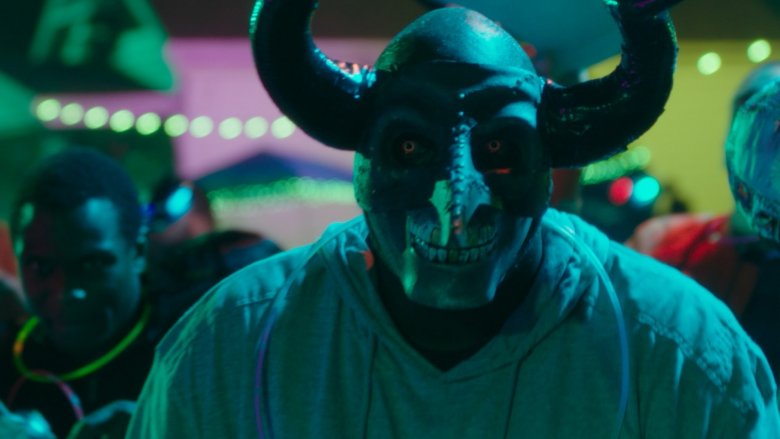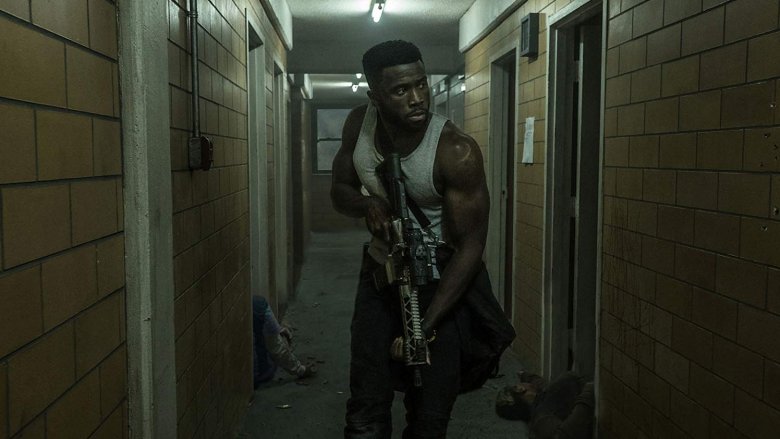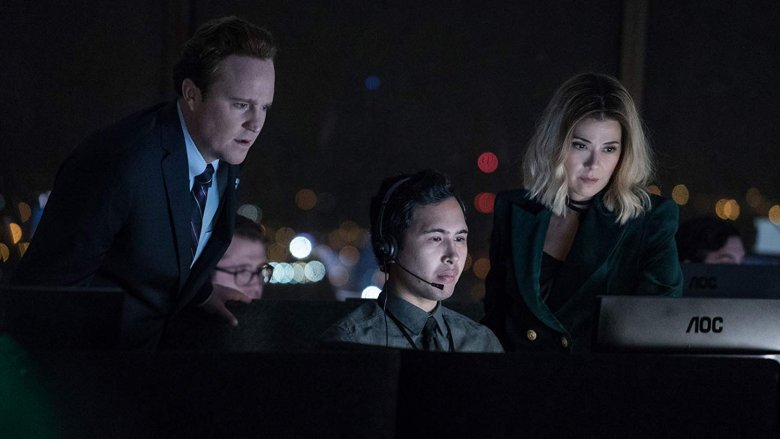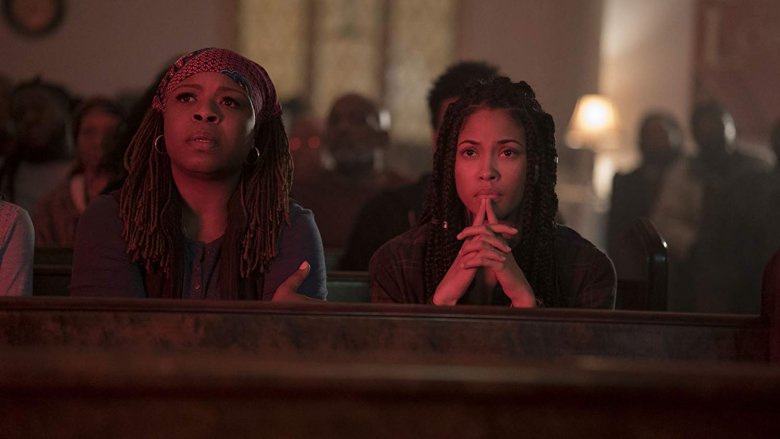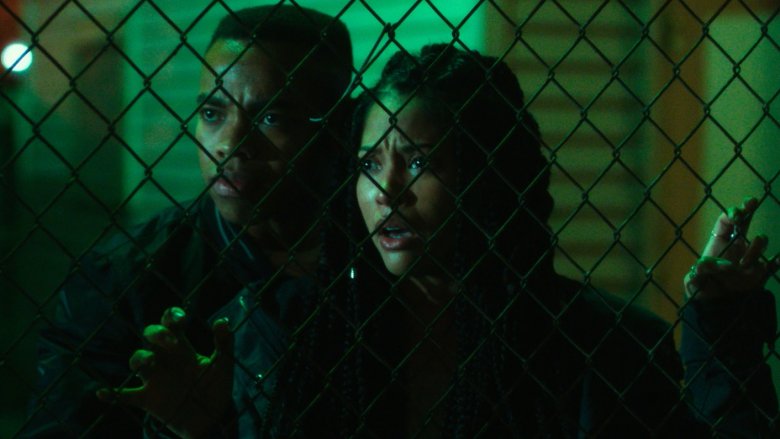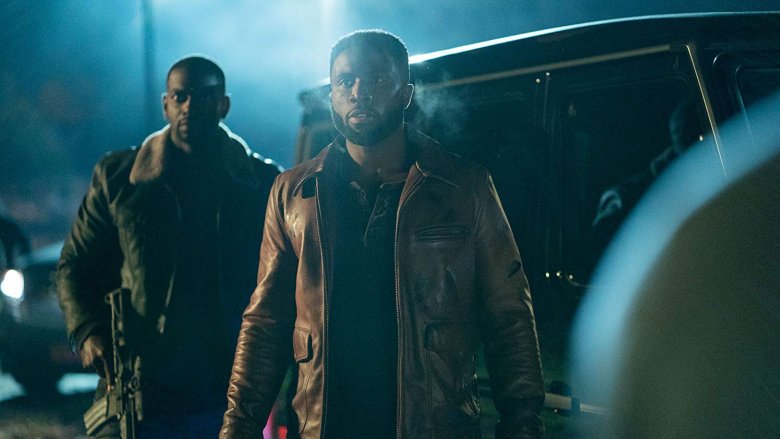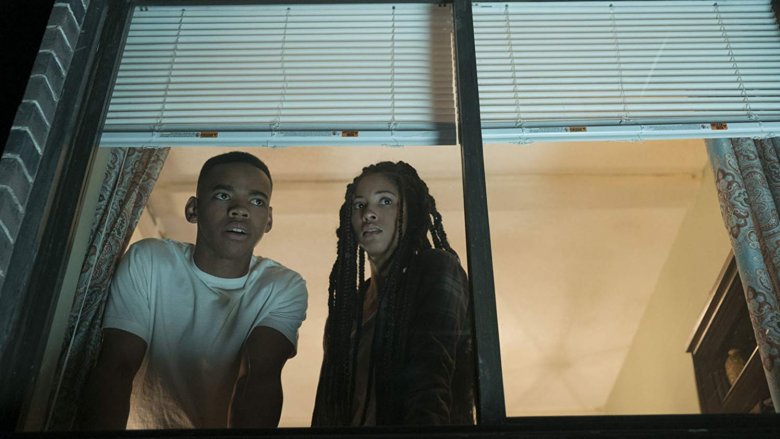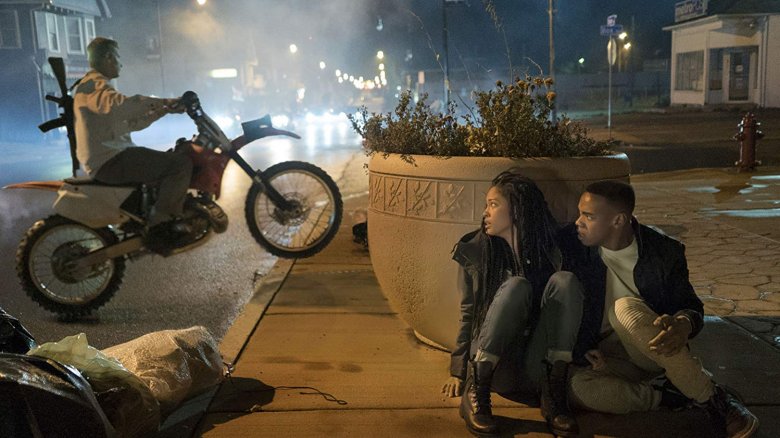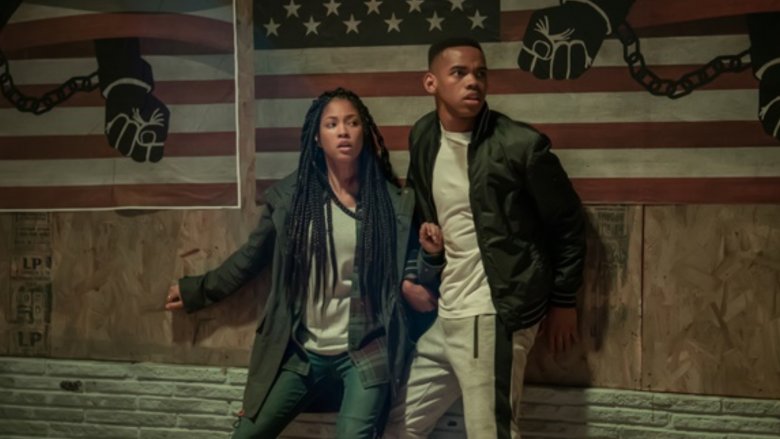The First Purge's Biggest Unanswered Questions
The prequel to James DeMonaco's Purge trilogy aims to answer a lot of the major questions that were posed by the original series. Thanks to The First Purge, we get to find out what kind of economic and social decline might lead to such a vicious event in the first place.
The original Purge movies certainly alluded to a combination of cultural unrest, economic decline, and religious zealotry as being to blame for the adoption of the annual free-for-all at the heart of the story. However, The First Purge dives right into the political underpinnings that assured the Experiment would succeed, and shows us exactly what that first trial run of the sadistic ritual looked like.
If we thought the New Founding Fathers of America were depraved before, watching them prey on the weakest and most financially vulnerable people in the country reveals an all new shade of cruelty for the organization. Despite all The First Purge tells us about this mechanism for mayhem, though, the film still leaves quite a few stones unturned. Here are some of the biggest unanswered questions left by The First Purge.
What's the story behind Dmitri's training?
For all his faults, our new hero Dmitri (Y'lan Noel) also has a lot of talents. He may lead a life of crime, but considering how well he handles himself against the special ops-type forces on the ground during the Experiment, he's obviously been through some pretty incredible and disciplined training. It's not just his marksmanship — although that's amazingly on point. He's also a strong hand-to-hand fighter with a knack for martial arts, and he has some supreme tactical skills that range from scouring buildings under siege to planting and detonating bombs mid-melee.
Where he learned all of these things is something of a mystery in the movie. There's a vague mention of his combat experience when he and his team of street soldiers recognize a mercenary symbol tattooed on their foes' lifeless bodies, but that's pretty much the sum of the story we get to explain his ultra-convenient capabilities. How he manages to be not only as good as this gaggle of hired guns storming the city, but good enough to defeat a dozen-plus of them at once, is simply left to suspension of disbelief.
Where are the Experiment controls?
As shown in their co-interview with CNN's Van Jones at the start of the film, the NFFA's spokesman Arlo Sabian (Patch Darragh) and the Experiment's "architect" Dr. May Updale (Marisa Tomei) are, for all public purposes, working together on the first Purge. Their interests and insights differ significantly behind the scenes, though. While she seems to be only in it to prove her point that people need to exercise some lawlessness once a year to function properly as a society, he wants this to work and catch on because it'll ensure the continued rise of his nascent political party that's taken over America at the highest levels of governance.
At first, they seem to be on the same team, but once things don't pan out as she expects, and he starts sending in hit squads on the sly to juice up the ante, she realizes she has no power over the Purge. Dr. Updale often describes the Experiment as an exercise in psychology — basically, the Stanford Prison Experiment, but with machetes and no guards — but her lack of actual oversight or physical controls undermines that idea pretty quickly on. So the question becomes: Is she purposely obtuse about the true nature of the night and blindly trusting of the NFFA, or is she just dense enough to believe this is how to run a controlled behavioral experiment and draw data? In either case, her collegiate credentials really need to be reviewed.
How is this supposed to work, anyway?
Arlo Sabian isn't happy until the bloodshed begins — and neither are the newscasters and spectators watching from outside Staten Island. For him, it's because the NFFA believes that the best way to reduce unemployment and poverty is to kill off those who are unemployed and impoverished. What's not clear, though, is why it takes graphic violence to make the Experiment a bankable success where the public is concerned.
Sabian believes that without a bunch of bloodshed, the NFFA won't be able to expand the Purge into a national event because it won't be attractive to outsiders. Considering that the scenes of cultural unrest seem to show the exact opposite — people are marching for better treatment, not to maim one another in the streets — it doesn't make a ton of sense. Wouldn't financial crimes be more attractive to them? Besides, if murder's the key ingredient to everything, why even make any other crime legal, too? Why not just call it Slash-N-Dash Day or something equally as deadly?
Why take it everywhere?
Another question raised by The First Purge is why the NFFA are so insistent on having the Experiment go national in the first place. They make it clear from the start that their goal is to have Staten Island become the lodestar example of this macabre movement so it can become an American pastime as treasured as cherry pie and baseball, but what isn't so clear is why they want it to extend all the way from sea to shining sea.
The NFFA's logic is that the Purge will help to cleanse the nation of its lower-income communities, little by little, but if that's true, then why is it necessary to extend the event to areas that don't have as much of a problem with poverty? It seems pretty clear why they chose Staten Island to launch the project, so why didn't they just try expanding to some other mostly low-income areas first?
Where's all the money?
A surprising number of people agree to stay in Staten Island during the Experiment in The First Purge, despite the very real possibility that they might fall victim to whatever untold madness lies ahead, and part of the reason is that everyone is promised $5,000 if they agree to stay put, with even more compensation for those who actually go out and participate in the ruckus — whether that means looting the local pawn shop or suiting up with finger needles and impaling a few unsuspecting partygoers.
A lot of the people who do agree to stay, and even get involved, do perish throughout the night, and it's not clear what will become of their precious earnings. If Purge participants die, do their loved ones still get their money? Do people who don't plan to purge, but end up doing so, get paid as well? For that matter, does anyone actually get paid in the end, or is that all just another one of the NFFA's lies meant to raise the body count?
What happens to the drones and mercs?
The NFFA's leadership — including newly-elected President Bracken — aren't satisfied by the slow uptick of slaughter that commences on Staten Island during the initial hours of the Experiment, so they call in a literal army of masked men who use tracking information provided by the NFFA's special contact lenses to hunt down the largest groups of Purge participants (some who simply plan to hide and wait out the night in places like church or the local laundromat).
As if that isn't devastating enough, the NFFA also use weaponized drones that are able to gun down any potential opposition gatherings, like Dmitri's gang. We haven't seen either of these before in the Purge film series, so we have to imagine the practice of using military force to make all that bloody magic happen, but does anyone ever find out the NFFA cheated by using them in the Experiment? If not, how do they keep Dmitri and the others from revealing those secrets when they vow to keep up the "fight" after the sun rises?
Was the real purpose of all this ever revealed?
Dr. Updale puts a pretty face, quite literally, on the Experiment and presents the concept as one of societal self-betterment. In her mind, if people can live (and let die) a little every now and then, they will be better citizens overall. The NFFA sees it differently, of course; if they can push this Purge process far enough, they can essentially exterminate enough of the underprivileged population to re-grow the economy without openly resorting to government-sponsored genocide.
Naturally, that's not the NFFA's public posturing, so the question we're left with is whether the party ever lifts the veil on what they're really trying to accomplish as things move forward. It would certainly make sense that they do, given the racially suggestive diatribe of the "Polite Leader" (Rhys Wakefield) in the original Purge film. If not, it's also unclear how they might manage to disguise the Purge's true intention, considering the fact that the Experiment is televised, with a lot of the NFFA's most thrilling murders committed by hitmen who wear Ku Klux Klan gear or ride with white supremacist flags in full view.
Do other countries ever follow suit?
America might not be quite so beautiful once the Purge fully takes hold of society, but by all accounts of the statistics shared in the original trilogy, the concept does reduce unemployment and crime rates significantly by the time the first film picks up several years in. In The First Purge, we're treated to a few news reports about how other First World nations like Germany start sanctioning the United States ahead of the initial Experiment and refer to it as "barbaric."
The question, then, is whether the annual Purge ever gains steam in other nations as a result of its economic impact. Do those who doubt its efficacy eventually decide to participate themselves, or does the United States continue to remain isolated and ostracized by its erstwhile allies as a result of its newfound penchant for practical violence? Perhaps the upcoming Purge TV series will fill in some of these blanks.
